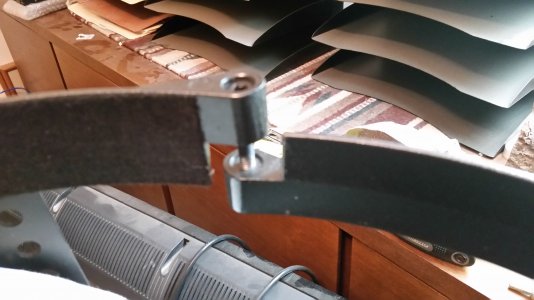I am trying to make a two part hinge on a 14 inch diameter round clamp. The clamp is made from 3/16 x 1 steel bar rolled in a circle. My thought for the hinge was to weld 3/8 nuts and cut horizontal half way in above on one side and below on the other; and then cut a vertical between them. What is the best way to cut the vertical?
I had thought of grinding the center and then step drilling toward the ends.
Any thoughts on improving the plan or cutting the vertical appreciated.
Thanks, Dan
I had thought of grinding the center and then step drilling toward the ends.
Any thoughts on improving the plan or cutting the vertical appreciated.
Thanks, Dan


